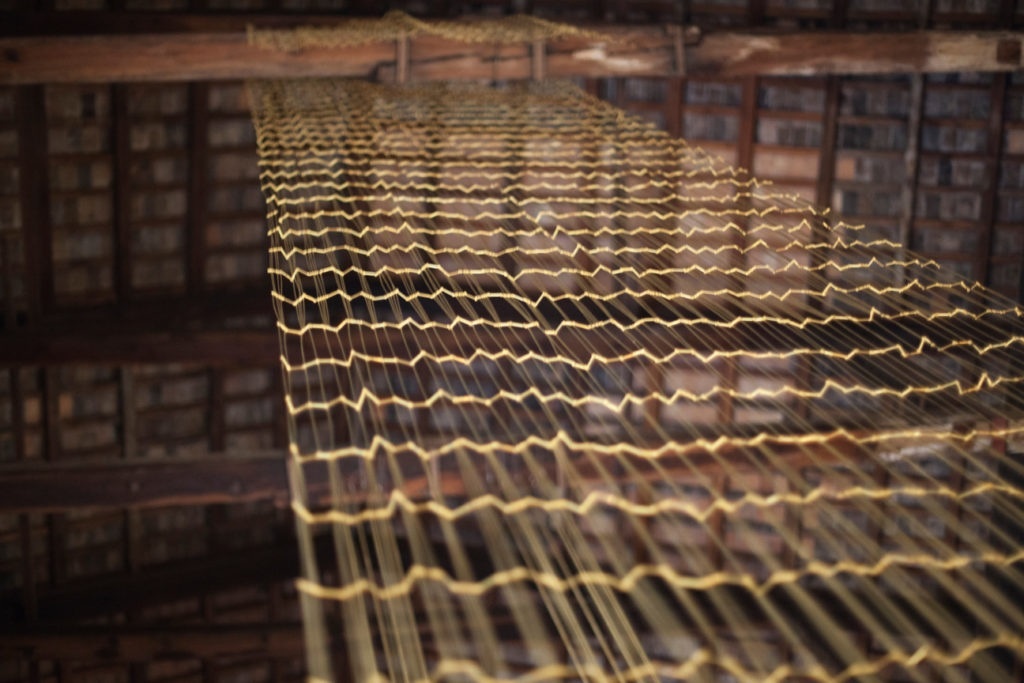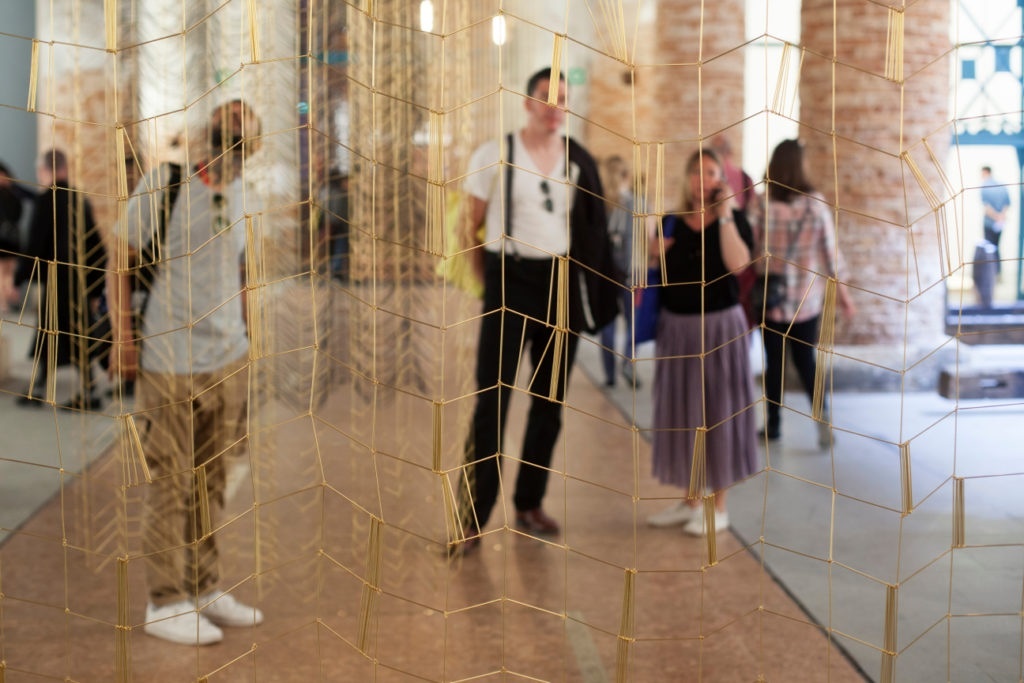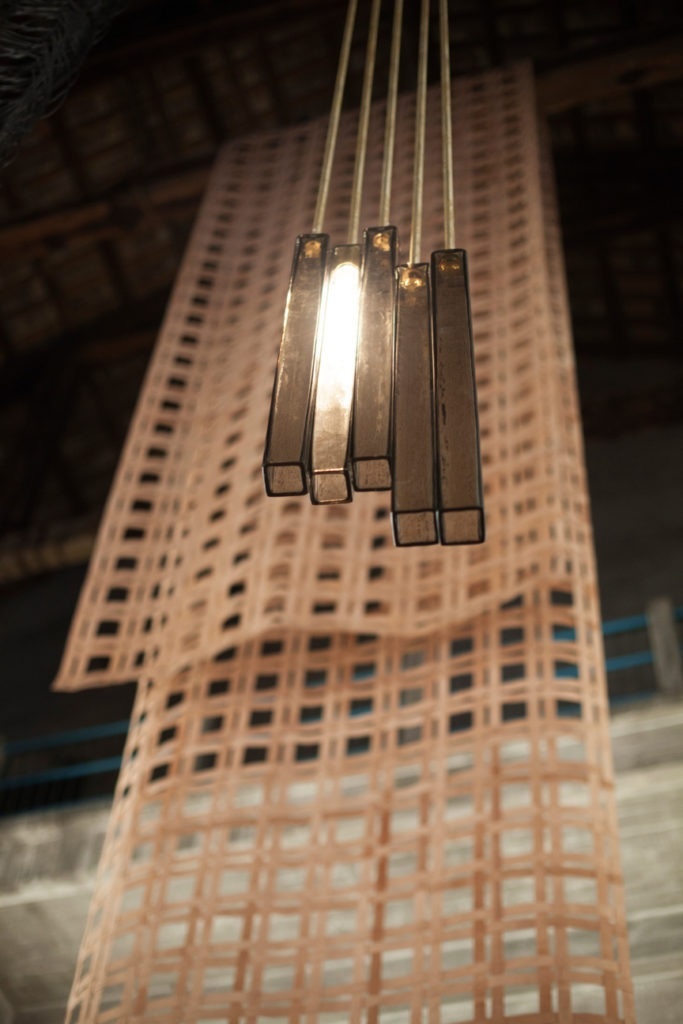Leonor Antunes: ...then we raised the terrain so that I could see out
La Biennale 2017
Leonor Antunes is a Portuguese artist living and working in Berlin since 2004. Her art invades the architectural surroundings, calling into question the modular elements of scale, size and volume, and examining the notions of repetition and duplication in the details of the surrounding space. Taking the biographical references of designers and architects of the modernist tradition as a starting point, the artist brings into play visual narratives by means of natural and industrial materials, lighting and textiles. In general, Antunes places the relationship between the exhibition space and the human being at the core of all her work, or, in other words, the links between body, space and units of measurement.
For the 57th International Art Exhibition, the artist is presenting an immersive and site-specific installation comprising a series of sculptures of leather, wood, metal and glass lamps made in the workshops of Murano. The work embodies several anecdotes inspired by the past and recent history of the city of Venice: from the decline of the Serenissima’s trade after the discovery of America to the work in the city by architect Carlo Scarpa (1906-1978); Venetian by origin, it is thanks to his structures and experimental layouts in museum spaces, universities and cemeteries, that Venice was able to shake itself free of the criticism of having become frozen in time from the point of view of art institutions. The different levels of transparency and opacity in the materials she uses refer to the thought of the French writer Edouard Glissant (1928-2011) who, denying, the universal value of Western criteria of knowledge, professes the freedom for everyone to choose not to be understood. Another frequent reference in Antunes' work is the architect Lina Bo Bardi (1914-1992) who, like the aforementioned Carlo Scarpa, proposed alternative solutions in Brazil for the functional revival of the exhibition space.
Co-produced by Kunsthalle Lissabon through Republica Portuguesa | Cultura DGArtes with the additional support of Ammodo; Institut für Auslandsbeziehungen – ifa; Air de Paris, Paris; Galleria Luisa Strina, São Paulo; kurimanzutto, Mexico City.



